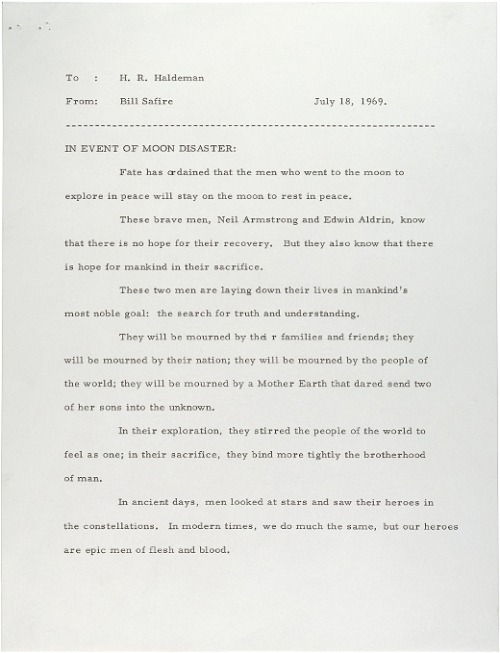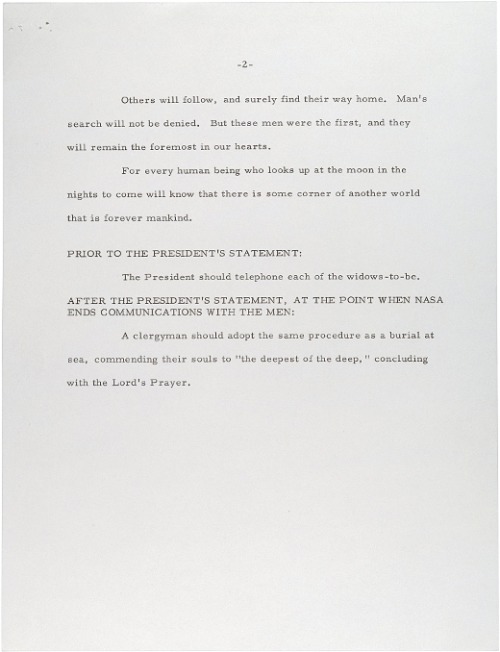Perché Non Siamo Più Tornati Sulla Luna?
Perché non siamo più tornati sulla luna?
Anni 60. Sembrava una corsa inarrestabile quella verso lo spazio.
Il programma Apollo realizzò il sogno americano di portare l'uomo sulla luna prima dei sovietici, dopo le sconfitte subite da questi ultimi, prima nel ‘57 con il primo satellite Sputnik fino al ‘61 con il primo viaggio spaziale di Yuri Gagarin. Un sogno durato 3 anni, 6 missioni e 12 astronauti. Una promessa mantenuta, quella del presidente John F. Kennedy, che prevedeva la conquista del satellite terrestre entro la fine di quel decennio.
Le tecnologie aerospaziali sono migliorate esponenzialmente da quei tempi, allora perchè non si torna più sulla luna?
Parte della popolazione crede che, in realtà, nessun uomo ci sia mai stato, un'ipotesi diffusa anche sul grande schermo, da un film del '78 di Peter Hyams, Capricorn One, che racconta di una falsa missione su Marte organizzata dalla Nasa per non vedersi cancellati i finanziamenti del governo, e da un popolare libro del fotografo francese Philippe Lheureux, pubblicato nel 2001, dal titolo Lumières sur la Lune. Idee che sono state smentite più volte, grazie anche alle sonde come la Lunar Reconnaissance Orbiter che ha recentemente inviato foto che mostrano i resti dei moduli di atterraggio, le strumentazioni e i percorsi effettuati dagli astronauti.
(Ebbene sì, ci sono ancora le impronte! Niente atmosfera = niente vento)

Il problema principale è di natura economica: i fondi destinati alla NASA sono diminuiti, di conseguenza bisogna saperli gestire bene, specialmente se si hanno necessità esplorative e di sperimentazioni, con nuove missioni, tra cui quella di portare un uomo su un asteroide entro il 2025 e la conquista di Marte entro il 2030. Il programma Apollo costò circa 24 miliardi di dollari del tempo, vi lavorarono oltre 400.000 persone. Per ogni missione vi era un solo lancio del Saturn V, mentre oggi servirebbero due lanci SLS, uno per il lander ed uno per l’Orion, a distanza di sei mesi l’uno dall’altro, entrambi dotati di uno stadio propulsivo criogenico (CPS); quest’ultimo serve per portare i moduli dall’orbita terrestre (LEO) a quella lunare (LLO). Come in passato, il lander sarebbe diviso in una parte inferiore (modulo di discesa) ed una superiore (modulo di risalita); quest’ultima ospiterebbe tutto l’equipaggiamento, le forniture ed i consumabili per l’equipaggio, nonchè sportelli adatti al passaggio delle tute “block 2 EVA Deep Space Suit”. Al termine del soggiorno lunare, l’equipaggio ripartirebbe verso l’Orion, che ha sufficiente delta-V per ricongiungersi al modulo di risalita in qualsiasi momento, anche se un rientro non nominale potrebbe imporre una permanenza in orbita lunare in attesa di una finestra favorevole alla traiettoria di rientro verso la Terra. Ad ogni modo, il costo del veicolo di discesa sarebbe, da solo, di svariati miliardi di dollari, da sommare agli svariati miliardi per i lanci SLS e tutto il resto, rendendo una missione lunare assai poco probabile.
Oltre al fattore economico, le agenzie spaziali cercano di preservare le preziosissime risorse umane che hanno. Una missione lunare, anche se potrebbe sembrare molto più semplice rispetto ad una marziana, ha comunque le sue insidie. Insidie che negli anni ‘60, anche se le strumentazioni non lo permettevano quanto oggi, venivano superate con un entusiasmo da “prima volta”, nonostante i vari incidenti di percorso - vedi quello del ‘67, verificatosi durante un addestramento terrestre, nel quale persero la vita i tre astronauti destinati alle prime missioni lunari, rimandate poi alla fine del ‘68, o quello sfiorato con l’Apollo 13 nel ‘70.
L’ultima speranza di rivedere un uomo sulla luna si potrebbe avere dal fronte russo: si vocifera che, dal 2024, la Russia sospenderà i finanziamenti per la stazione spaziale ISS, e che tra il 2029 e il 2030 verrà finalmente realizzato il sogno di qualche cosmonauta di passeggiare su un corpo celeste!
More Posts from Needingsomespace and Others

“Venice, city of gondoliers and the lovers they carry along the canals. Happy Valentine’s Day!” Thomas Pesquet from the International Space Station, Feb. 14, 2017 ⚘❤

Quanti di voi sapevano che, sulla parte anteriore della coscia destra della tuta EMU degli astronauti delle missioni Apollo, ci fosse una specie di finestrella pensata appositamente per praticare iniezioni d’emergenza?
Si chiamava Biomedical Injection Patch ed era un disco di silicone attraverso il quale l’astronauta poteva iniettarsi farmaci in emergenza tramite delle siringhe automatiche a penna: il setto di silicone (non visibile nel riquadro perché nascosto da uno strato di tessuto) permetteva di non depressurizzare la tuta perché subito dopo la puntura ritorna elasticamente alla forma iniziale. Il funzionamento è simile a quello degli attuali port-a-cath utilizzati nella chemioterapia, dispositivi che hanno cominciato a diffondersi nei primi anni ’80 e che non mi stupirebbe scoprire che si ispirano a quelli progettati dalla NASA.
Nel kit, vi erano adrenalina e antivertiginosi (e qualcuno sostiene che vi era anche del cianuro, per eutanasie d'emergenza, nel caso qualcosa fosse andato storto).
Image Credits: NASA, Paul Calle Sources: Chi ha paura del buio? https://www.hq.nasa.gov/alsj/a14/A14ShepardFlownSuit.html https://ntrs.nasa.gov/archive/nasa/casi.ntrs.nasa.gov/20130011327.pdf http://history.nasa.gov/SP-368/s6ch6.htm

Anelli di Saturno, il grande Titano e Encelado coi suoi geyser di ghiaccio. Un altro grande regalo della Cassini, che sta per concludere la sua missione.

In July 1967, astronomers at the Cavendish Laboratory in Cambridge, observed an unidentified radio signal from interstellar space, which flashed periodically every 1.33730 seconds. This object flashed with such regularity that it was accurate enough to be used as a clock and only be off by one part in a hundred million.
It was eventually determined that this was the first discovery of a pulsar, CP-1919. This is an object that has about the same mass as the Sun, but is the size of the San Francisco Bay at its widest (~20 kilometers) that is rotating so fast that its emitting a beam of light towards Earth like a strobing light house! Pulsars are neutron stars that are formed from the remnants of a massive star when it experiences stellar death.
A hand drawn graph plotted in the style of a waterfall plot, in the Cambridge Encyclopedia of Astronomy, later became renown for its use on the cover of the album “Unknown Pleasures” by 1970s English band Joy Division.
Some even managed to point out the resemblance of this plot to some other waterfall plot gifs.
Also, two days ago today was Joy Divisions singer’s, Ian Curtis, birthday!
Mathematica code:
R[n_] := (SeedRandom[n]; RandomReal[]) ListAnimate[ Table[ Show[ Table[ Plot[ 80 - m + .2*Sin[2 Pi*R[6*m] + Sum[4*Sin[2 Pi*R[4*m] + t + R[2 n*m]*2 Pi]* Exp[-(.3*x + 30 - 1*100*R[2 n*m])^2/20], {n, 1, 30, 1}]] + Sum[3(1 + R[3*n*m])*Abs[Sin[t + R[n*m]*2 Pi]]* Exp[-(x - 1*100*R[n*m])^2/20], {n, 1, 4, 1}], {x, -50, 150}, PlotStyle -> Directive[White, Thick], PlotRange -> {{-50, 150}, {0, 85}}, Background -> Black, Filling -> Axis, FillingStyle -> Black, Axes -> False, AspectRatio -> Full, ImageSize -> {500, 630}], {m, 1, 80, 1}]], {t, 0, 6.3*18/19, 6.3/19}], AnimationRunning -> False]

Collage delle ultime foto dalla sonda Cassini, negli ultimi passaggi ravvicinati prima del fatidico Grand Finale, previsto per settembre, dopo 20 anni di attività.

45 YEARS AGO TODAY: The Apollo 16 mission blasts off from Cape Canaveral on April 16, 1972.
Flying to New Heights With the Magnetospheric Multiscale Mission
A mission studying Earth’s magnetic field by flying four identical spacecraft is headed into new territory.

The Magnetospheric Multiscale mission, or MMS, has been studying the magnetic field on the side of Earth facing the sun, the day side – but now we’re focusing on something else. On February 9, MMS started the three-month-long process of shifting to a new orbit.

One key thing MMS studies is magnetic reconnection – a process that occurs when magnetic fields collide and re-align explosively into new positions. The new orbit will allow MMS to study reconnection on the night side of the Earth, farther from the sun.

Magnetic reconnection on the night side of Earth is thought to be responsible for causing the northern and southern lights.

To study the interesting regions of Earth’s magnetic field on the night side, the four MMS spacecraft are being boosted into an orbit that takes them farther from Earth than ever before. Once it reaches its final orbit, MMS will shatter its previous Guinness World Record for highest altitude fix of a GPS.
To save on fuel, the orbit is slowly adjusted over many weeks. The boost to take each spacecraft to its final orbit will happen during the first week of April.

On April 19, each spacecraft will be boosted again to raise its closest approach to Earth, called perigee. Without this step, the spacecraft would be way too close for comfort – and would actually reenter Earth’s atmosphere next winter!

The four MMS spacecraft usually fly really close together – only four miles between them – in a special pyramid formation called a tetrahedral, which allows us to examine the magnetic environment in three dimensions.

But during orbit adjustments, the pyramid shape is broken up to make sure the spacecraft have plenty of room to maneuver. Once MMS reaches its new orbit in May, the spacecraft will be realigned into their tetrahedral formation and ready to do more 3D magnetic science.

Learn more about MMS and find out what it’s like to fly a spacecraft.

Enceladus striated surface as seen by Cassini .
js

A magnificent moon looms large over the Space Shuttle Columbia at Cape Canaveral, 1981.



An address to the nation to be read by President Richard Nixon should the Apollo 11 astronauts become stranded on the moon,
To: H. R. Haldeman From: Bill Safire July 18, 1969. ——————————————————————————- IN EVENT OF MOON DISASTER: Fate has ordained that the men who went to the moon to explore in peace will stay on the moon to rest in peace. These brave men, Neil Armstrong and Edwin Aldrin, know that there is no hope for their recovery. But they also know that there is hope for mankind in their sacrifice. These two men are laying down their lives in mankind’s most noble goal: the search for truth and understanding. They will be mourned by their families and friends; they will be mourned by the nation; they will be mourned by the people of the world; they will be mourned by a Mother Earth that dared send two of her sons into the unknown. In their exploration, they stirred the people of the world to feel as one; in their sacrifice, they bind more tightly the brotherhood of man. In ancient days, men looked at the stars and saw their heroes in the constellations. In modern times, we do much the same, but our heroes are epic men of flesh and blood. Others will follow, and surely find their way home. Man’s search will not be denied. But these men were the first, and they will remain the foremost in our hearts. For every human being who looks up at the moon in the nights to come will know that there is some corner of another world that is forever mankind. PRIOR TO THE PRESIDENT’S STATEMENT: The President should telephone each of the widows-to-be. AFTER THE PRESIDENT’S STATEMENT, AT THE POINT WHEN NASA ENDS COMMUNICATIONS WITH THE MEN: A clergyman should adopt the same procedure as a burial at sea, commending their souls to “the deepest of the deep,” concluding with the Lord’s Prayer.